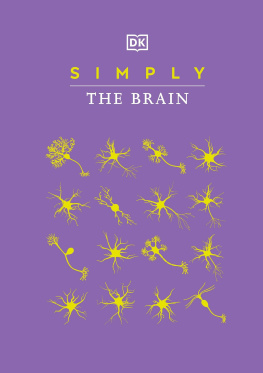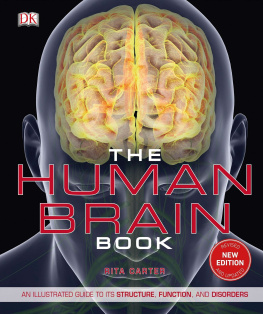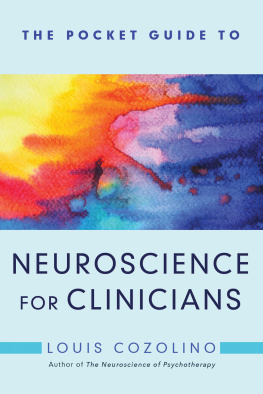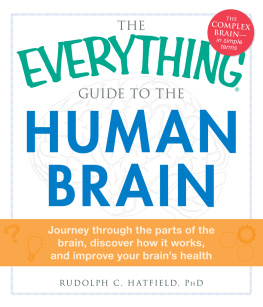

Neuroscience For Dummies, 2nd Edition
Published by: John Wiley & Sons, Inc., 111 River Street, Hoboken, NJ 07030-5774, www.wiley.com
Copyright 2016 by John Wiley & Sons, Inc., Hoboken, New Jersey
Published simultaneously in Canada
No part of this publication may be reproduced, stored in a retrieval system or transmitted in any form or by any means, electronic, mechanical, photocopying, recording, scanning or otherwise, except as permitted under Sections 107 or 108 of the 1976 United States Copyright Act, without the prior written permission of the Publisher. Requests to the Publisher for permission should be addressed to the Permissions Department, John Wiley & Sons, Inc., 111 River Street, Hoboken, NJ 07030, (201) 748-6011, fax (201) 748-6008, or online at http://www.wiley.com/go/permissions .
Trademarks: Wiley, For Dummies, the Dummies Man logo, Dummies.com, Making Everything Easier, and related trade dress are trademarks or registered trademarks of John Wiley & Sons, Inc., and may not be used without written permission. All other trademarks are the property of their respective owners. John Wiley & Sons, Inc., is not associated with any product or vendor mentioned in this book.
LIMIT OF LIABILITY/DISCLAIMER OF WARRANTY : WHILE THE PUBLISHER AND AUTHOR HAVE USED THEIR BEST EFFORTS IN PREPARING THIS BOOK, THEY MAKE NO REPRESENTATIONS OR WARRANTIES WITH RESPECT TO THE ACCURACY OR COMPLETENESS OF THE CONTENTS OF THIS BOOK AND SPECIFICALLY DISCLAIM ANY IMPLIED WARRANTIES OF MERCHANTABILITY OR FITNESS FOR A PARTICULAR PURPOSE. NO WARRANTY MAY BE CREATED OR EXTENDED BY SALES REPRESENTATIVES OR WRITTEN SALES MATERIALS. THE ADVICE AND STRATEGIES CONTAINED HEREIN MAY NOT BE SUITABLE FOR YOUR SITUATION. YOU SHOULD CONSULT WITH A PROFESSIONAL WHERE APPROPRIATE. NEITHER THE PUBLISHER NOR THE AUTHOR SHALL BE LIABLE FOR DAMAGES ARISING HEREFROM.
For general information on our other products and services, please contact our Customer Care Department within the U.S. at 877-762-2974, outside the U.S. at 317-572-3993, or fax 317-572-4002. For technical support, please visit www.wiley.com/techsupport .
Wiley publishes in a variety of print and electronic formats and by print-on-demand. Some material included with standard print versions of this book may not be included in e-books or in print-on-demand. If this book refers to media such as a CD or DVD that is not included in the version you purchased, you may download this material at http://booksupport.wiley.com . For more information about Wiley products, visit www.wiley.com .
Library of Congress Control Number: 2016933973
ISBN 978-1-119-22489-1 (pbk); ISBN 978-1-119-22491-4 (ebk); ISBN 978-1-119-22490-7 (ebk)
Neuroscience For Dummies
To view this book's Cheat Sheet, simply go to www.dummies.com and search for Neuroscience For Dummies Cheat Sheet in the Search box.
- Table of Contents
Guide
Pages
Introduction
The central mystery about the brain is simply this: How can a bunch of interconnected cells make each of us what we are not only our thoughts, memories, and feelings, but our identity. At present, no one can answer this question. Some philosophers think it is not answerable in principle.
I believe we can understand how the brain makes us what we are. This book, while surely not containing the complete answer, points the way to what the answer looks like: In short, the brain is made of neurons, each of which is a complex little computer. Parts of the nervous system make suggestions to the rest of it about what you should do next. Other parts process the sensory inputs you receive and tell the system how things are going so far. Still other parts, particularly those associated with language, make up a running dialog about all of this as it is going on; this is your consciousness.
Those concepts arent too difficult to grasp, but people think of neuroscience as hard. And why? Because in order for your nervous system to perform these functions, it takes 100 billion neurons and a quadrillion connections structured over billions of years of evolution and all the human years of development and learning that resulted in who you are and where you are now.
You need to know three things to understand how the nervous system works. The first is how the neurons themselves work. The second is how neurons talk to each other in neural circuits. The third is how neural circuits form a particular set of functional modules in the brain. The particular set of modules that you have make you a human. The content of your specific modules make you unique.
Our nearest animal relative, the chimpanzee, has pretty much the same neurons and neural circuits that you and I do. They even have most of the same modules. We humans have a few extra modules that permit consciousness. Understanding this is what this book is about.
About This Book
Lets face it. Neuroscience is a complex topic. How could it not be since it deals with the brain, the most complex structure in the known universe. In this book, I explain some very complex ideas and connections in a way that both students enrolled in introductory neuroscience courses and those who are just interested in the topic for fun can understand.
To use and understand this book, you dont have to know anything about the brain except that you have one. In this book, I cover as much of the basics as possible with simple language and easy-to-understand diagrams, and when you encounter technical terms like anterior cingulate cortex or vestibulospinal reflex, I explain what they mean in plain English.
This book is designed to be modular for the simple reason that I want you to be able to find the information you need. Each chapter is divided into sections, and each section contains information about some topic relevant to neuroscience, such as
- The key components of the nervous system: neurons and glia
- How neurons work and what the different kinds of neurons are
- What systems are involved in planning and executing complex actions
- The role of the neocortex in processing thoughts
The great thing about this book is that you decide where to start and what to read. Its a reference you can jump into and out of at will. Just head to the table of contents or the index to find the information you want.
Note: You can use this book as a supplemental text in many undergraduate courses because I discuss the neuron and brain function as a system. Typical undergraduate perception courses, for example, give short (and usually unsatisfactory) introductions to neurons and neural processing and little if any coverage of cognition. Cognitive psychology and neuroscience courses typically cover cognition well but often dont ground cognition at the level of neurons. Behavioral neuroscience courses sometimes ignore cognition and neurophysiology almost altogether while doing a decent job explaining heuristics and phenomenology of behavior and learning. You can also use this book as an adjunct to graduate or health profession courses where the nervous system or mental illnesses or disorders are mentioned but little explicit coverage is given of the nervous system and the brain.
Within this book, you may note that some web addresses break across two lines of text. If youre reading this book in print and want to visit one of these web pages, simply key in the web address exactly as its noted in the text, pretending as though the line break doesnt exist. If youre reading this as an e-book, youve got it easy just click the web address to be taken directly to the web page.
Next page












